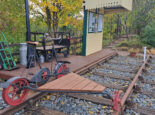The silent killer

Many of us know something of the dangers of asbestos – but now it has been banned, most will probably assume that it is an issue that no longer affects us. The reality, however, is that of the nine million tons originally imported to the UK, five million tons are estimated to still be out there – and you could well be digging it up in your garden this summer. We talked to Bryan Goodayle, Senior Asbestos Consultant with Cromwell Associates Ltd., about the risks and how to avoid them
‘Without being too melodramatic,’ says Bryan Goodayle, ‘asbestos will kill you. The difficulty is getting this across to people. They may be well aware that if you fall from scaffolding you’ll kill yourself, but still feel that if you breath in asbestos fibres, you won’t.’ Bryan attempts to get around this in his awareness training with the opening slide, which features a skull and crossbones with the words ‘the silent killer’.
Department for Transport statistics show that the total number of road deaths in 2013 was 1,754. We currently have 4,000 people a year dying from asbestos-related diseases
The fibres in question are made airborne when asbestos – of which there are three forms: ‘blue’, ‘brown’ and ‘white’ – is broken or damaged. ‘Blue and brown fibres are sharp, needle-like fibres with a barb at the end. If you breathe those in, they hook into your lung. Your body tries to get rid of them, but it can’t because asbestos is resistant to all acid. So scars form around them. Asbestosis is actually fibrotic scarring of the lung. After that, you live with asbestosis, which will eventually kill you, or it develops into cancer of the lung lining, which typically gives you 6-12 months.’ White asbestos has different shaped fibres and is somewhat less hazardous, but still presents a serious risk. One cubic centimeter of asbestos contains 100,000 fibres. Those risks may seem remote, but let’s put this in perspective. Department for Transport statistics show that the total number of road deaths in 2013 was 1,754. We currently have 4,000 people a year dying from asbestos-related diseases.
‘It takes between 15-60 years for the disease to come out in your system,’ says Bryan. ‘The most prolific period was the 60s, and we’re 60 years on in 2020. It’s estimated that 10,000 people will die that year from asbestos-related diseases.’ Blue and brown asbestos – the most hazardous types – were banned in 1985, with white asbestos following suit in November 1999. Any building built after that shouldn’t contain it, but anything built before, potentially could. ‘You could have asbestos in your garden, in vegetable pots, or you may have taken some asbestos off your garage roof. Even in allotments, asbestos sheeting could have been used to shore up soil. It could be an old tank from a loft, or some guttering, roof and floor tiles, electrical sockets or a stack pipe or downpipe. There were garages and sheds that were totally made of asbestos.’
Asbestos was used in an estimated 3,000 different items
Some of this material may have been disposed of improperly, by simply burying in the soil. ‘They just didn’t know about the dangers of it.’ In fact, in the 50s, 60s and 70s, asbestos had seemed like a miracle material. ‘It was cheap, strong, light and it was easy to use. As a building material, it’s phenomenal. The strength of asbestos fibres is greater than steel. If you put cement and water together and form it into a corrugated sheet, you can break that with your fingers. But add 25% asbestos fibres, and when it dries you can walk on it.’ As a result, asbestos was used in an estimated 3,000 different items.
So what should people do if they think they may have found it? First, don’t disturb it. Then, call a reputable asbestos company. They can then provide advice and safe disposal of any material you may have. You need to get a consignment note to prove asbestos was disposed of properly, and failure to do so will result in prosecution. Certified asbestos disposal companies such as Cromwell Associates are authorised by the Environment Agency to issue such consignment notes. Estimates for removal are free, while there is a charge for analysis to determine the presence of asbestos – but on balance, it’s a small price to pay.
With thanks to Cromwell Associates Ltd, Unit B, Oaklea House Enterprise Way, Bretton, Peterborough PE3 8YQ
01733 345944, www.cromwell-associates.co.uk















